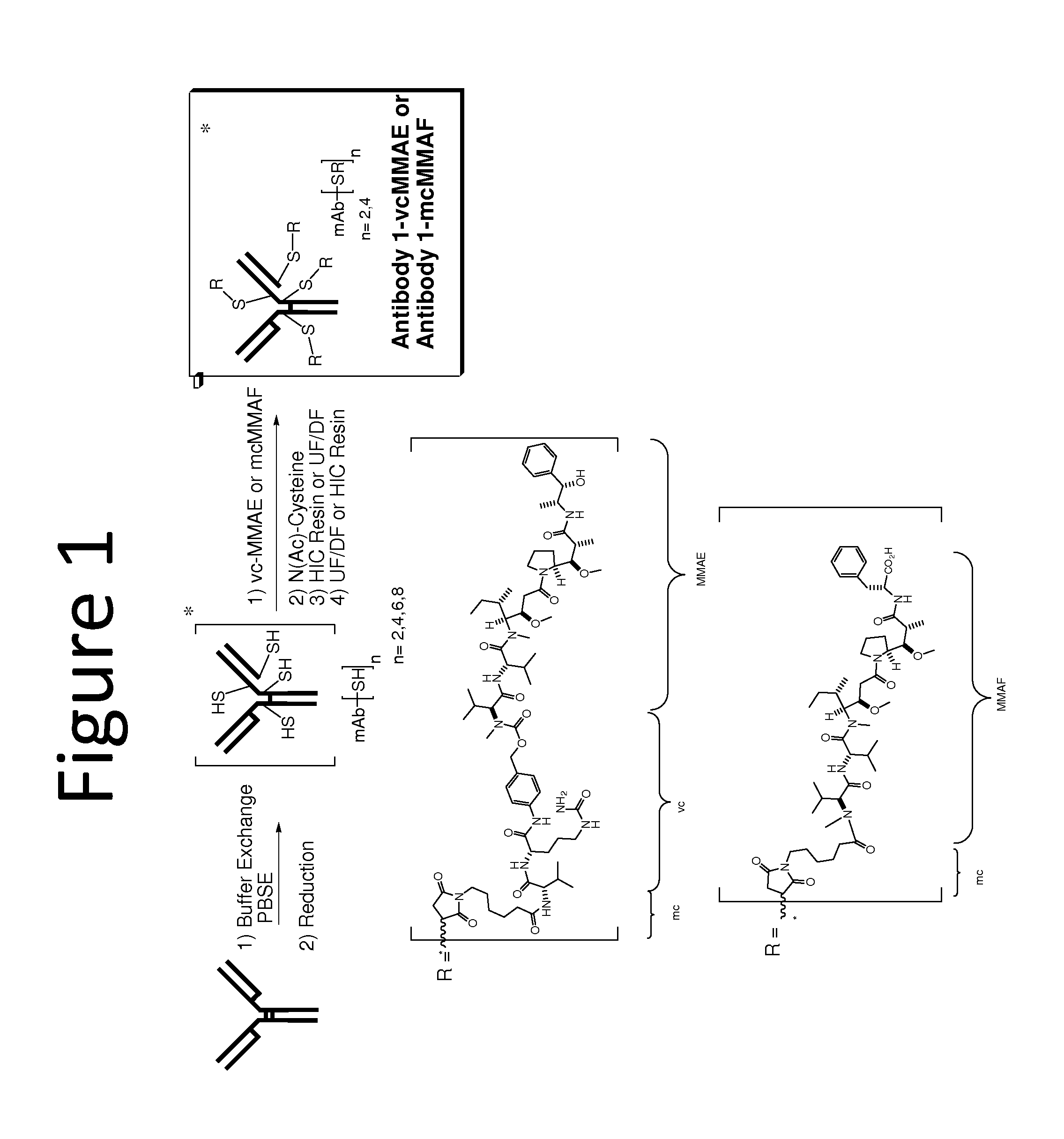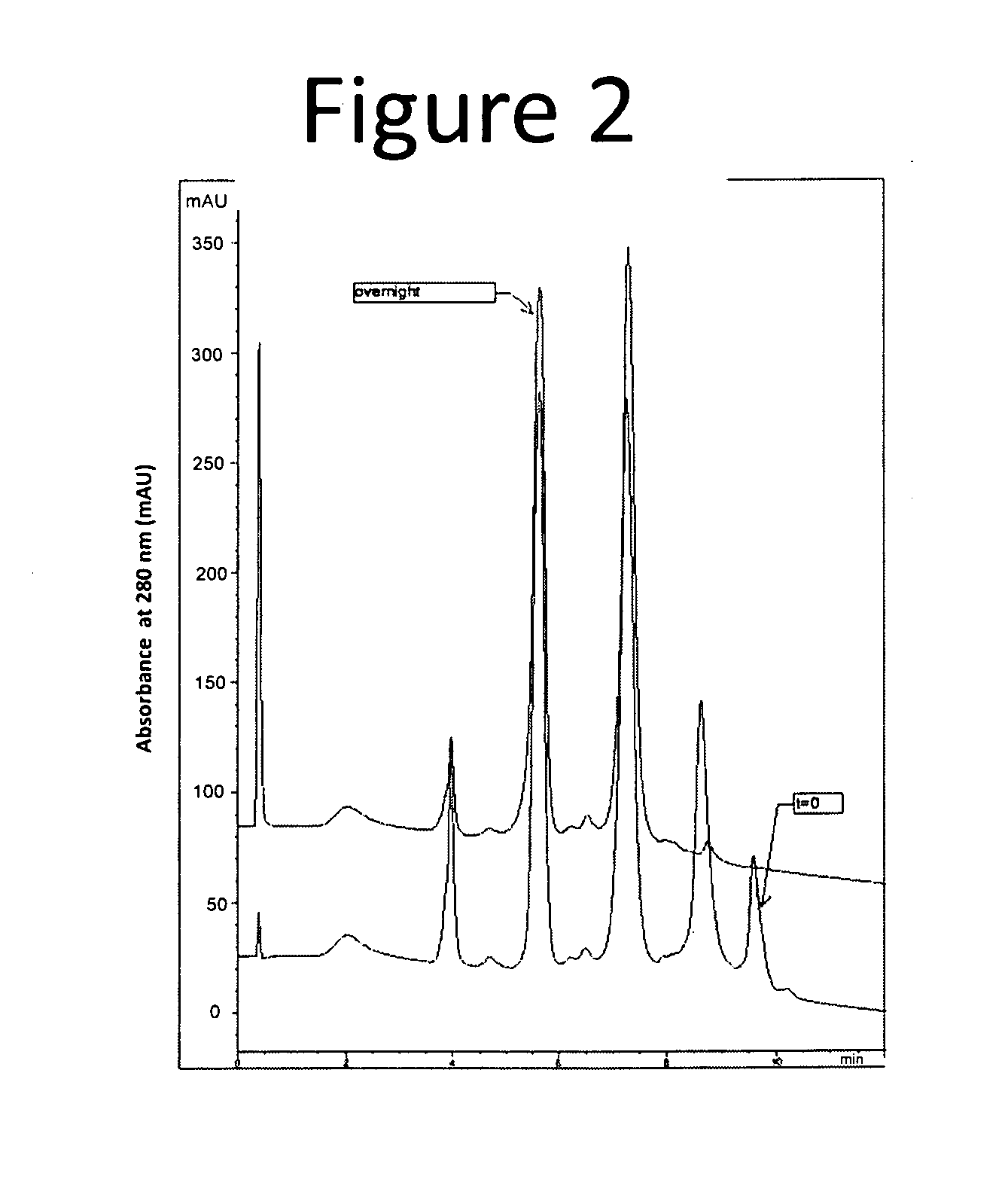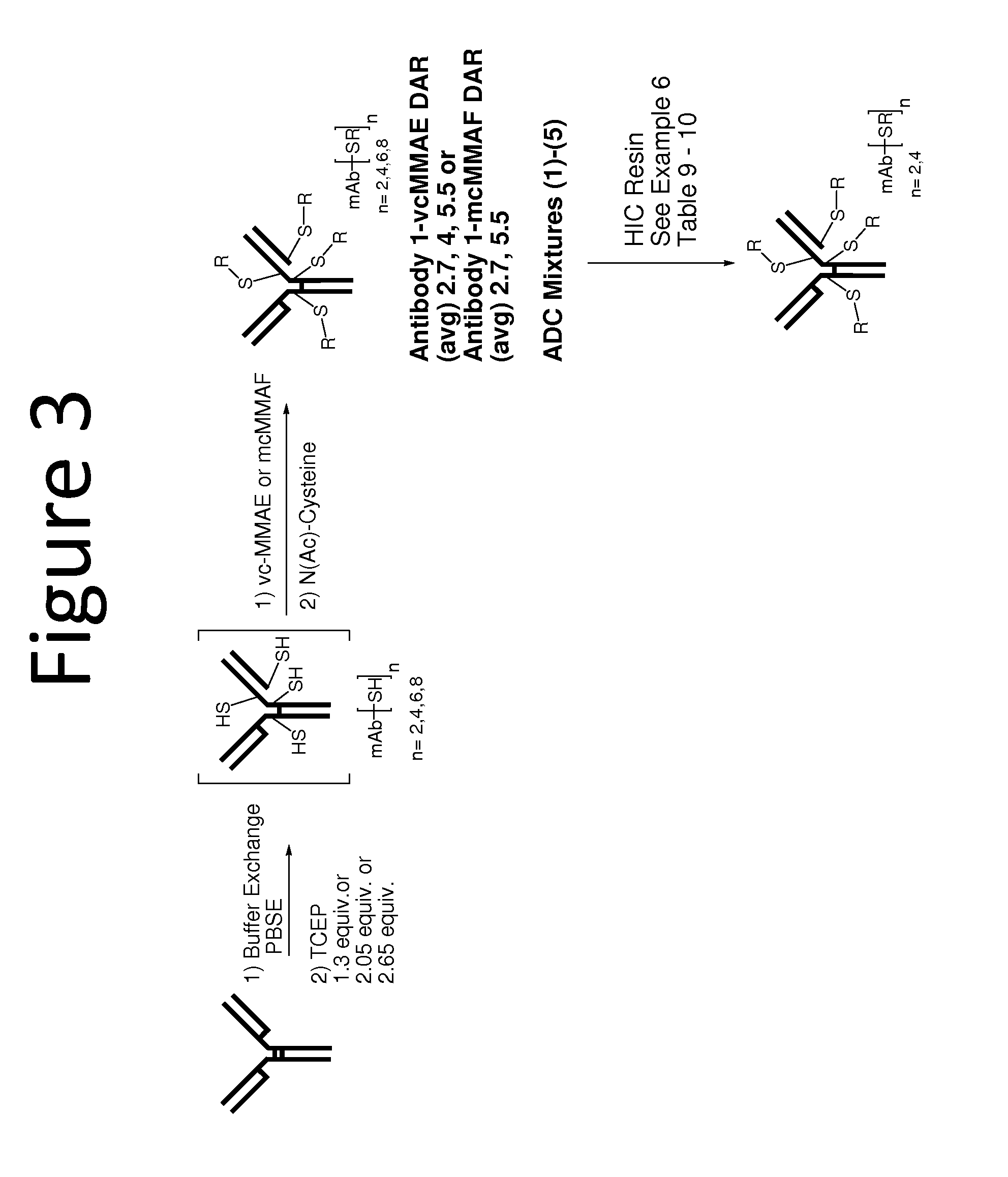Antibody drug conjugate (ADC) purification
a technology of conjugate and antibody, applied in the field of antibody drug conjugate (adc) purification, can solve the problems of increasing the propensity to aggregate formation, and achieve the effect of increasing the drug load of adcs
- Summary
- Abstract
- Description
- Claims
- Application Information
AI Technical Summary
Benefits of technology
Problems solved by technology
Method used
Image
Examples
example 1
Conjugation of Auristatin vc-MMAE to Anti-EGFR Antibody 1
[0162]The following example describes the conjugation of an antibody to an auristatin to form an antibody drug conjugate (ADC), specifically the conjugation of MMAE to anti-EGFR Antibody 1. Generation of the Antibody 1 ADC with reduced drug loads of vc-MMAE molecules per antibody, involved a partial reduction of the mAb followed by reaction with Val-Cit-MMAE (vcMMAE) to complete the conjugation, as described in detail below.
Disulfide Reduction of Antibody
[0163]Reduction of Antibody 1 was achieved using TCEP (tricarboxyethyl phosphine). Recombinant monoclonal Antibody 1 was produced by a transfected Chinese hamster ovary (CHO) cell line and purified at Abbott Bioresearch Center (Worcester, Mass.). Following antibody purification, the antibody solution (148 mg / mL, 6 mL) was charged into a 50 mL polypropylene centrifuge tube. The antibody solution was then diluted to a total volume of 41 mL by adding PBSE Buffer (360 mL; 125 mM K...
example 2
Batch Purification of Antibody Drug Conjugate (ADC) Using a Hydrophobic Resin
[0170]The following example describes batch purification of an ADC (Antibody 1-vc-MMAE), where the resulting purified composition had an average DAR of 2.8. The following purification process selectively removed the higher loaded ADCs, i.e., the six and eight drug-loaded species, resulting in a purified distribution comprising lower ordered drug load species, i.e., DARs of 2-4. The purification process utilized small amounts of a hydrophobic resin that could be titrated in to the crude antibody solution (or mixture) in order to selectively remove ADCs of varying degree of conjugation.
[0171]The purification process provides a practical, scalable process to selectively modulate the distribution of both Auristatin E and Auristatin F conjugates resulting from partial inter-chain disulfide reduction and subsequent alkylation with vc-MMAE or mc-MMAF. The purification method described below has been demonstrated o...
example 3
Scale Up of Batch Hydrophobic Interaction ADC Purification
[0186]The optimal conditions for removing high DAR ADCs that were identified from the titration screen were scaled up for larger scale purification.
[0187]In order to first reduce the antibody, a solution containing Antibody 1 (151 mg / mL, 50 mL, 7.52 g) was added to a 500 mL flask. The solution was diluted to a total volume of 395 mL by the addition of a solution prepared by mixing a pH 6, 15 mM Histidine buffer (30 mL) and PBSE Buffer (360 mL; 125 mM K2HPO4, 150 mM NaCl; 6.3 mM EDTA, pH 7.7). The resulting antibody solution was warmed to 37° C. 10.98 mM TCEP solution (12.1 mL, 2.05 equiv) was then added to the solution, which was stirred for 30 minutes. The antibody solution was then cooled to ambient temperature over 20 minutes.
[0188]Once reduced, Antibody 1 was conjugated to vcMMAE by adding 10 mM vcMMAE DMSO solution (28.8 mL, 4.72 equiv.) to the antibody solution. DMSO (21.2 mL) was added next, whereupon the solution was ...
PUM
| Property | Measurement | Unit |
|---|---|---|
| Fraction | aaaaa | aaaaa |
| Fraction | aaaaa | aaaaa |
| Fraction | aaaaa | aaaaa |
Abstract
Description
Claims
Application Information
 Login to View More
Login to View More - R&D Engineer
- R&D Manager
- IP Professional
- Industry Leading Data Capabilities
- Powerful AI technology
- Patent DNA Extraction
Browse by: Latest US Patents, China's latest patents, Technical Efficacy Thesaurus, Application Domain, Technology Topic, Popular Technical Reports.
© 2024 PatSnap. All rights reserved.Legal|Privacy policy|Modern Slavery Act Transparency Statement|Sitemap|About US| Contact US: help@patsnap.com










